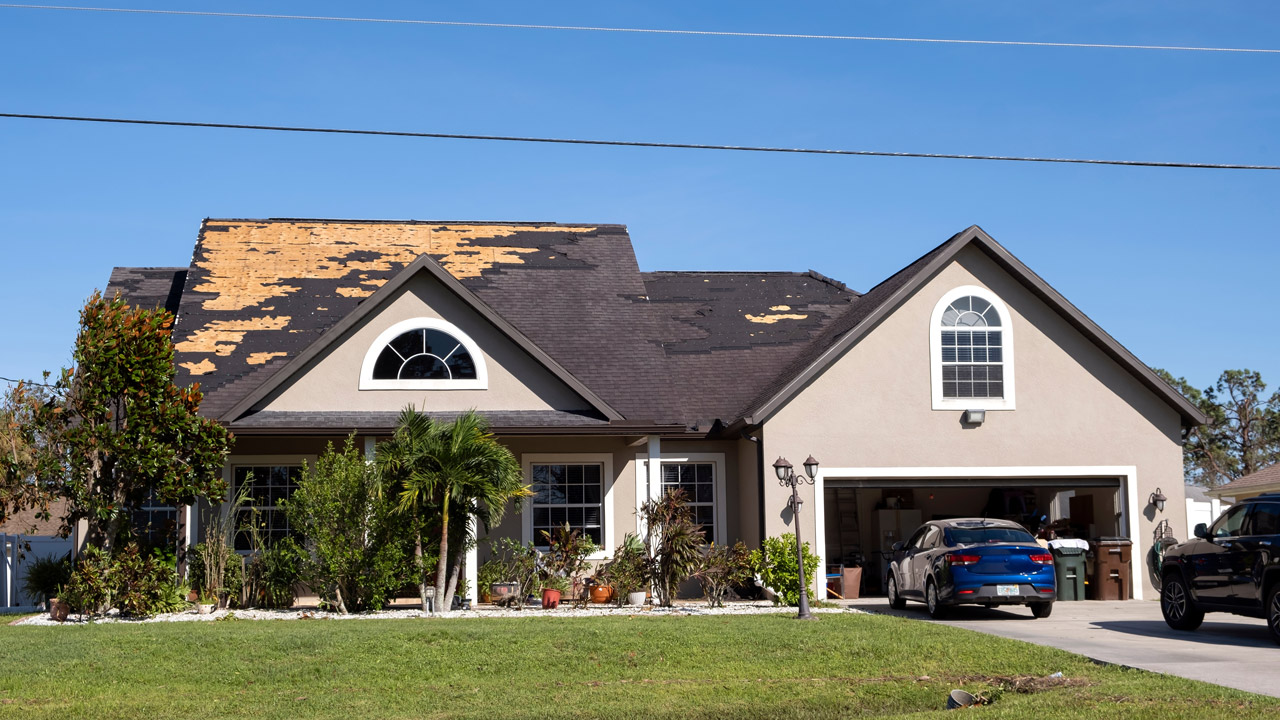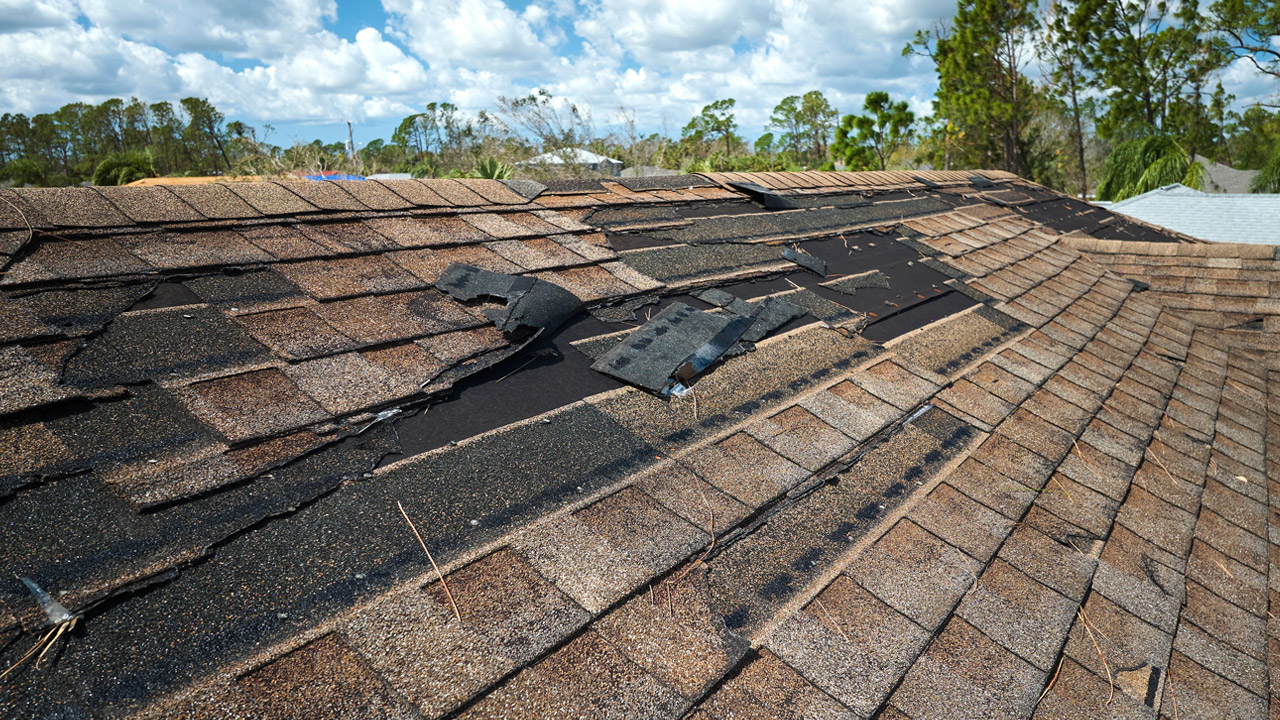Storm Proofing Your Home
Storm proofing your home and roof is an important part of being a home or business owner in the Austin, Houston, San Antonio, and Round Rock, TX areas. This is especially true given the prevalence of severe weather events like thunderstorms, high winds, tornadoes, and hurricanes in these regions.
Preparing your home or business for these conditions can significantly reduce the risk of damage and ensure the safety of your family and belongings. Below is an in-depth guide for how to storm-proof your home and roof.
Request an Appointment
1. Conduct a Roof Inspection
The first important step of storm proofing your home is to make sure you conduct a roof inspection. The process of roof inspections involves examining the roof for signs of damage or wear, such as missing, loose, or deteriorated shingles, which could become entry points for water during heavy rains. It’s also important to check for any structural issues that could compromise the roof’s ability to withstand high winds.
We advise hiring a roofing expert for this inspection. A professional roofing company like LOA Construction will have the expertise necessary to identify issues that may not be obvious to the untrained eye and can provide recommendations for repairs or reinforcements that will enhance the roof's durability against storms.
Once you or your roofing company has identified potential vulnerabilities, it's important to have any repairs uncovered in the inspection addressed as soon as possible. The reason is that even relatively minor damage can lead to significant problems during severe weather.
A roof inspection in Austin, Houston, San Antonio, or Round Rock, TX should assess to see whether the following will be needed: 1.) repair or replacement of any damaged shingles, 2.) sealing leaks and 3.) ensuring that the roof structure is solid and intact are all vital steps.
Additionally, you should consider having your roofing experts installing a waterproof underlayment beneath the shingles for an extra layer of protection against water infiltration, especially in hurricane-prone areas.
Related: 4 Tips for What to do When Your Roof Starts Leaking
2. Install Impact-Resistant Roofing

Upgrading to impact-resistant roofing materials can offer a substantial increase in your home’s defense against severe weather. Materials such as metal roofing, modified asphalt shingles, and rubberized roofing are designed to withstand the force of hail, resist tearing in high winds, and reduce the risk of punctures from flying debris.
This is particularly important in areas like Houston, which can experience a wide range of severe weather conditions from hurricanes to hail storms.
The initial investment in impact-resistant roofing may be higher than traditional materials, but the benefits are significant. These materials not only provide enhanced protection against the elements but also can lead to savings on homeowners' insurance premiums in some cases.
Furthermore, they tend to have a longer lifespan, reducing the need for frequent replacements and repairs, and thereby offering long-term savings and peace of mind.
3. Secure Loose Items Around Your Property
Before a storm approaches, securing or storing away loose items around your property can prevent them from becoming dangerous projectiles. Items such as patio furniture, grills, gardening tools, and outdoor decorations should be moved to a secure location, like a garage or shed, where they won't pose a threat to your home's windows, doors, or roof.
This precaution is especially important in regions susceptible to high winds and tornadoes, where the velocity of the wind can turn even small objects into significant hazards.
In addition to securing movable objects, consider the installation of permanent fixtures designed to withstand inclement weather. For example, anchoring structures like pergolas or gazebos to the ground can prevent them from being uprooted during high winds.
Implementing these measures not only protects your property but also contributes to the safety of your community by preventing debris from causing damage or injury to others.
4. Clean Gutters & Downspouts
Gutters and downspouts play a crucial role in directing rainwater away from your home’s foundation and preventing water damage.
However, when they become clogged with leaves, twigs, and other debris, they can overflow, causing water to back up under your roof shingles or pool around your home's foundation. Regular gutter and roof cleaning, especially before the storm season, ensures that water can flow freely, protecting your roof and foundation from water-related issues.
In addition to securing movable objects, consider the installation of permanent fixtures designed to withstand severe weather. For example, anchoring structures like pergolas or gazebos to the ground can prevent them from being uprooted during high winds.
Implementing these measures not only protects your property but also contributes to the safety of your community by preventing debris from causing damage or injury to others.
5. Trim Trees and Secure Fencing
Trimming trees and securing fencing around your property are essential steps in preparing for storms. Overhanging branches can break off during high winds, potentially causing damage to your roof, windows, and cars, or even injuring someone.
Regularly trimming trees not only reduces these risks but also promotes the health of the trees, making them more resilient to the stresses of severe weather. When trimming, pay special attention to removing any dead or weakened branches that are more likely to break.
Fencing can also become damaged or completely uprooted during storms, especially if it is not securely anchored. Inspect your fencing for any signs of wear or instability and make necessary repairs or reinforcements.
For wooden fences, consider using metal posts for greater strength. For those in particularly wind-prone areas, designing fences with spaces between slats or using chain-link fencing can allow wind to pass through more easily, reducing the likelihood of it being knocked over.
6. Install Storm Shutters
Storm and hurricane shutters are an effective way to protect your windows from being broken by flying debris during a storm.
There are several types of shutters available, including roll-down, accordion, and colonial styles, each offering different levels of protection and aesthetic appeal. Installing these shutters can provide peace of mind, knowing that your home's vulnerable points are safeguarded against the elements.
For homeowners who may not have the budget for permanent shutters, boarding up windows with marine plywood is a viable temporary solution. This method requires some preparation, as plywood sheets should be cut to size in advance and stored in an accessible location.
When a storm is imminent, these boards can be quickly and securely attached to windows to provide a solid barrier against the wind and debris.
7. Reinforce Doors & Garage Doors

Doors, particularly garage doors, are often the weakest structural points in a home when facing high winds. Reinforcing these can significantly increase your home's ability to withstand severe weather.
For entry and back doors, consider installing deadbolt locks and heavy-duty strike plates to help keep them closed during strong wind gusts. Additionally, reinforcing the hinges and using doors made from impact-resistant materials can provide an extra layer of security.
Garage doors should also be specifically reinforced, as they cover a large area and are prone to failure in high winds. Reinforcement kits are available that can strengthen the door and prevent it from being blown in or sucked out by the pressure differences caused by high winds.
This is especially important in areas prone to hurricanes or tornadoes, as a breached garage door can lead to an increase in wind pressure inside the home, potentially leading to roof and structural failure.
8. Consider a Backup Power Source
Severe storms often result in power outages that can last for days or even weeks. Having a backup power source, such as a generator, can keep critical appliances running, like refrigerators and sump pumps, and ensure that your family remains comfortable and safe.
When selecting a generator, consider the size and power requirements of your home to ensure it can handle your needs during an outage.
Solar-powered chargers and battery backups are also valuable for keeping phones and other small electronics charged during extended power outages. This is important for staying informed and being able to communicate with family members and emergency services.
Remember to follow safety guidelines when using generators, such as keeping them outside and away from windows to prevent carbon monoxide poisoning.
9. Create an Emergency Kit
An emergency kit is a vital component of storm preparedness. This kit should include essentials such as non-perishable food, water, flashlights, batteries, a first aid kit, medications, and copies of important documents.
Customize your kit based on your family’s specific needs, including pet supplies if necessary. This kit should be stored in an easily accessible location so you can quickly grab it in case of an evacuation or if you need to take shelter in your home.
In addition to physical supplies, have a plan in place for where your family will take shelter in your home during a storm, such as a basement or an interior room without windows. Familiarize everyone with the plan and practice it regularly.
Also, know the evacuation routes and shelter locations in your area in case you need to leave your home.
Related: How to Find The Best Company to Help With Your Emergency Roof Repair
10. Review Your Insurance Coverage
Finally, ensure that your homeowner's insurance coverage is adequate and up to date. Understand what your policy covers and what it doesn’t, particularly concerning storm damage.
Some policies may not automatically cover flood or wind damage, which are common during severe weather events, so you might need to purchase additional coverage. Documenting your home and belongings with photos or videos can also be helpful for insurance claims.
Reviewing your insurance policy regularly and after making any significant upgrades or changes to your property ensures that your coverage remains adequate. Consider consulting with an insurance provider to discuss your specific needs and to ensure that you have the best possible protection against storm damage.
Choose LOA for Storm Damage Prevention & Repair

By taking these comprehensive steps, homeowners in the Austin, Houston, and San Antonio areas can significantly enhance their home’s resilience against severe weather, protecting their property, and ensuring the safety and comfort of their families.
Further Reading: 12 Common Roofing Problems and How to Prevent Them
Contact LOA Construction!
At LOA Construction, our storm restoration and damage repair experts proudly serve residential and commercial clients throughout the cities of Austin, Houston, San Antonio, Round Rock, Belton, Temple, and Killeen.
We can help answer all questions you may have regarding storm damage prevention, maintenance, and repair. Contact the roofing professionals at LOA Construction today!
Request an Appointment
Further Reading:




